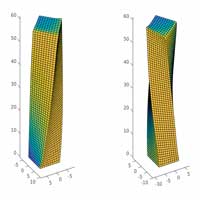
Researchers designed a polymer known as a liquid crystal elastomer that can be 'programmed' to both twist and bend in the presence of light. Especially in the field of soft robotics, this is essential for building devices that exhibit controllable, dynamic behavior without the need for complex electronic components.
